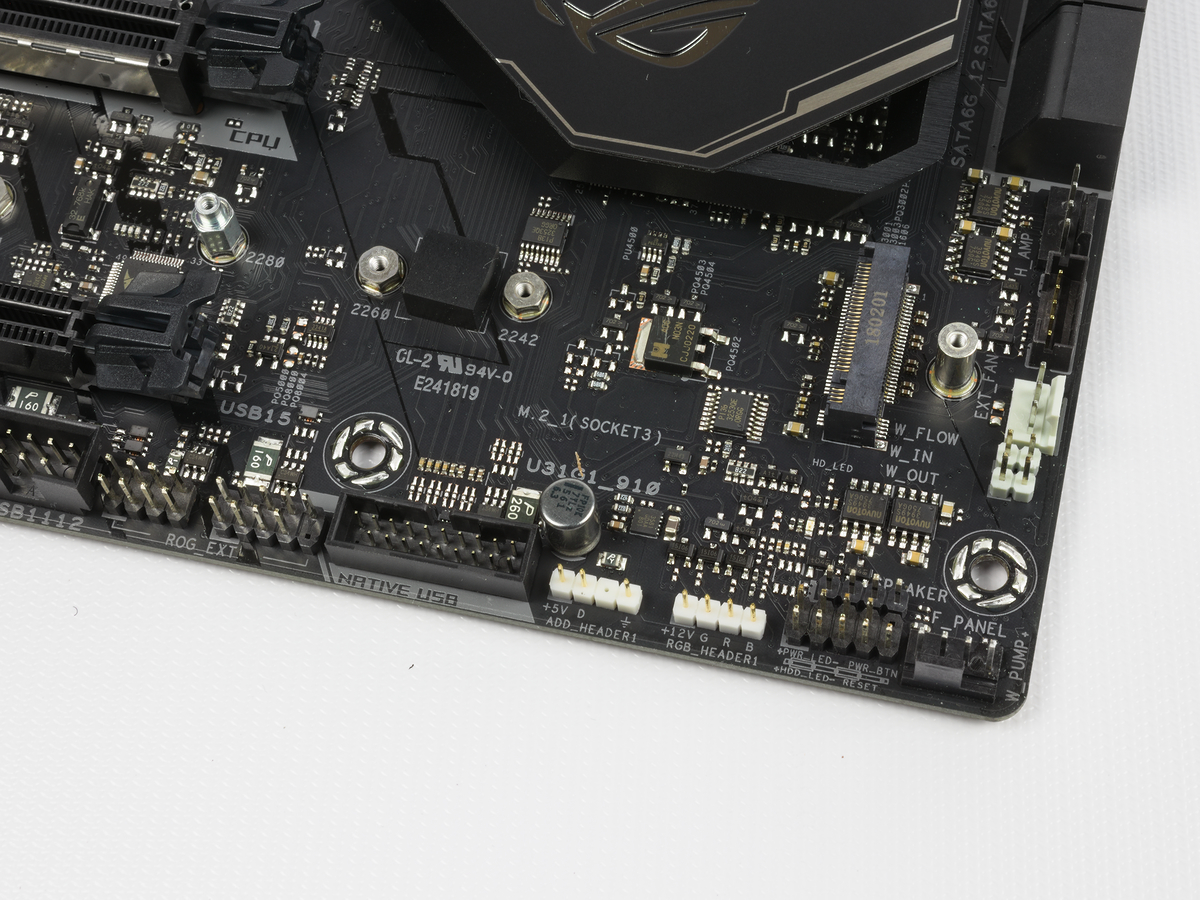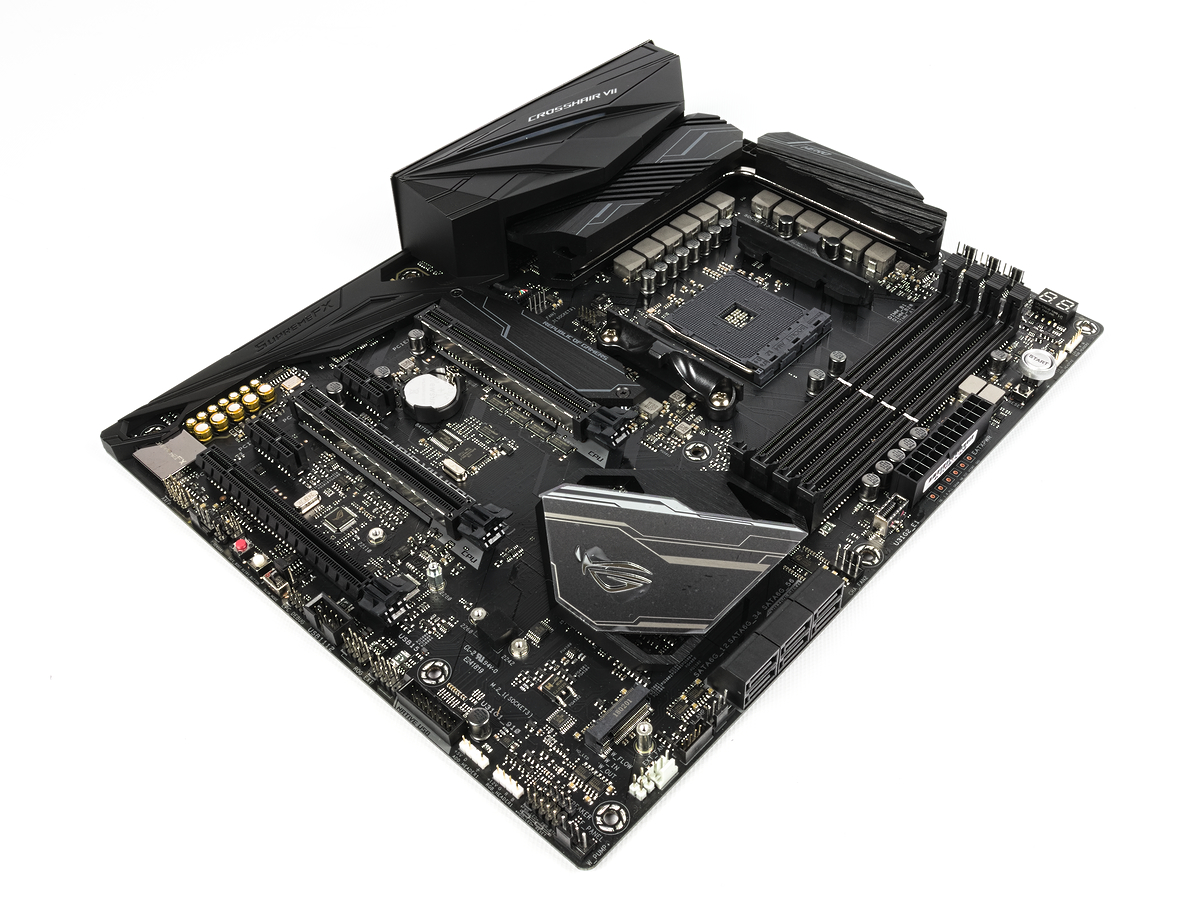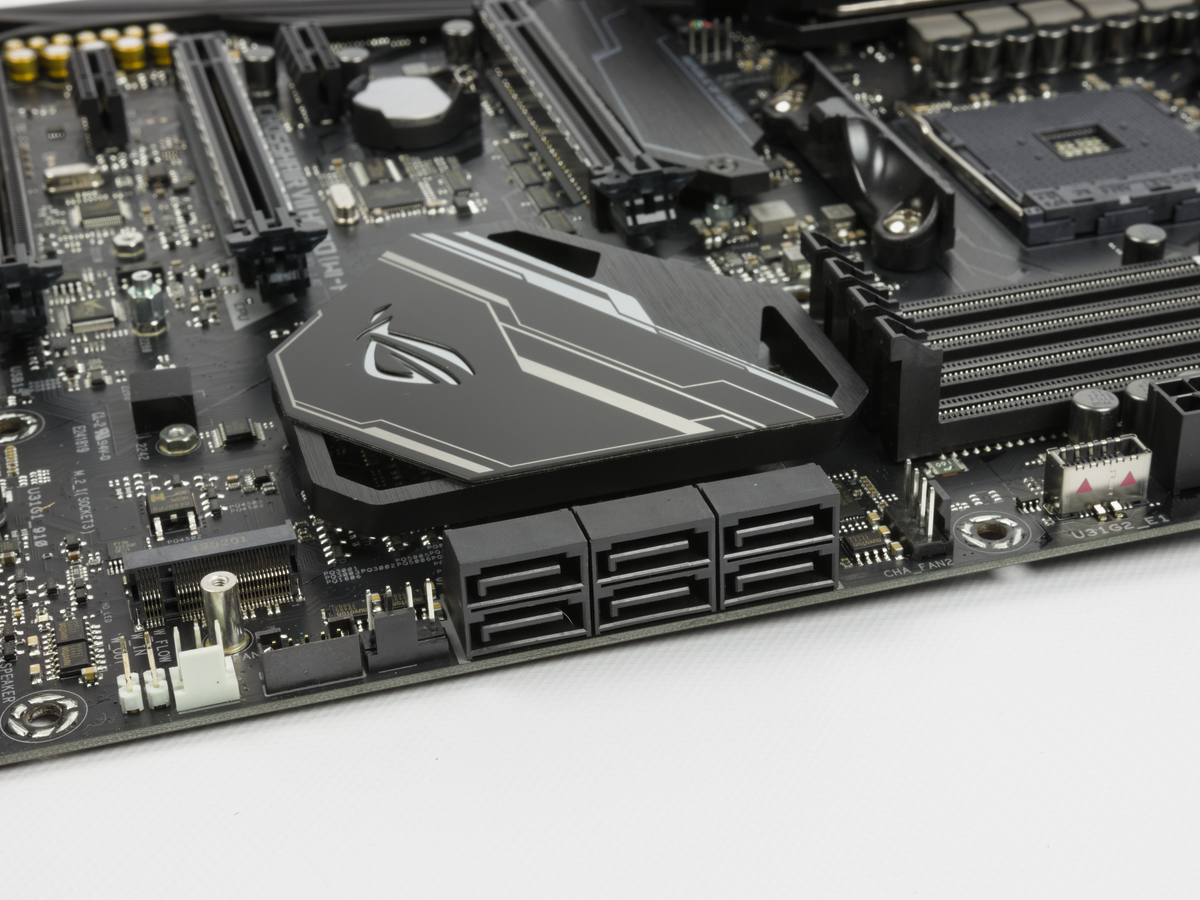Tom's Hardware Verdict
While it's unquestionably expensive, Asus' X470 Crosshair is a true hero board for serious AMD enthusiasts. It delivers great performance in all respects, and excellent I/O and expandability. If you're building an AMD-based extreme overclocking rig or a test bench, it should be on your short list.
Pros
- +
Excellent overclocking experience
- +
Great memory compatibility
- +
Plenty of connectivity and cooling options
Cons
- -
Expensive
- -
Looks are a little plain by modern standards
Why you can trust Tom's Hardware
Intro and Product Description
Asus' Crosshair line is well respected as a premium platform for overclocking, benchmarking, and system stability. However, competitors are starting to learn a few things from Asus and that may make the X470 Crosshair VII Hero (Wi-Fi) board we're looking at here less appealing for builders in the know. We’re going to open up this board's classic red-and-black box to see how well this flagship brand stands up in 2019. Can Asus justify the high asking price (about $285 when we wrote this), given the general value angle of the Ryzen platform in general and a plethora of (mostly lower-priced) competition?
Specifications
| Socket | AM4 |
| Chipset | AMD X470 |
| Form Factor | ATX |
| Voltage Regulator | 10+2 Phases (5 doubled) |
| Video Ports | ✗ |
| USB Ports | 10 Gbps: (1) Type-C, (3) Type A5Gb/s: (8) Type AUSB 2.0: (2) Type A |
| Network Jacks | (1) Gigabit Ethernet, (2) SMA Antenna |
| Audio Jacks | (5) Analog, (1) Digital Out |
| Legacy Ports/Jacks | (1) PS/2 |
| Other Ports/Jack | (1) BIOS Flashback, (1) Clear CMOS |
| PCIe x16 | (2) v3.0 x16/x0 or x8/x8*(1) v2.0 x4*x8 slot shared with M.2_2 |
| PCIe x8 | ✗ |
| PCIe x4 | ✗ |
| PCIe x1 | (2) v2.0 |
| CrossFire/SLI | 4x / 4x |
| DIMM slots | (4) DDR4 |
| M.2 slots | (1) PCIe v3 x4 / SATA3 42/60/80/110mm(1*) PCIe v3 x4 42/60/80mm |
| U.2 Ports | ✗ |
| SATA Ports | (6) 6Gb/s |
| USB Headers | (1) USB3.1 Gen2(1) 5Gbps(2) USB2.0 |
| Fan Headers | (8) 4-pin, (1) 3-pin W_FLOW, (2) 2-pin W_IN/OUT |
| Legacy Interfaces | (1) COM, (1) Speaker |
| Other Interfaces | (1) Thermal sensor, (2) RGB, (2) Addressable LED, (1) ROG Extension, (1) EXT Fan Header, (1) Front Panel Audio |
| Diagnostics Panel | Numeric |
| Internal Button/Switch | (1) Power-ON, (1) Reset, (1) Safe Boot, (1) ReTry, (1) Slow Mode Switch, (1) LN2 Mode |
| SATA Controllers | Integrated (0/1/10) |
| Ethernet Controllers | Intel I211AT |
| Wi-Fi / Bluetooth | Asus Wi-Fi GO! Module (2x2) / Bluetooth 4.2 / 3.0 |
| USB Controllers | ASMedia USB 3.1 Gen 2 Controller |
| HD Audio Codec | ROG SupremeFX S1220 |
| DDL/DTS Connect | ✗ / ✗ |
| Warranty | 3 Years |




At a price of nearly $300 USD, the Asus Crosshair VII Hero Wifi has a lot to live up to for its top-shelf pedigree. The outer layer of the box presents a moderately stylized red and black theme like Asus’ Zenith and other Crosshair products, and opening the box focuses the builder to the beautiful PCB and ROG logo cleanly presented on the underside of the lid.
The contents of the box are slightly underwhelming, with access to Wi-Fi antenna, SLI bridge, four SATA cables, RGB and LED extenders along with documentation and Republic of Gamer adornments. And I won’t lie: I found the ROG coaster very useful for keeping my test bench dry from perspiring cans of Mountain Dew.
This Crosshair VII Hero Wifi comes with an integrated backplate for the rear IO, and the port selection looks more like it belongs in a high-end desktop (HEDT) X399 system. For USB connections, you get eight USB3.0 Type-A, two USB 3.1 Gen2 (one Type-A and one Type-C), and two USB2.0 ports. A PS/2 port accompanies the USB 2.0 ports for legacy input devices.
Network access is enabled via an RJ-45 port wired out to Intel's I211AT Gigabit Ethernet controller and two SMA (antenna) connectors routed to an included Wi-Fi GO! Module which provides a 2x2 antenna setup compatible with the 802.11 specifications up to AC. Asus’ SupremeFX S1220 audio codec is connected to one SPDI/F and five gold-plated analog outputs, which are illuminated in the back for easier port navigation in dark environments. Lastly, how sad would an overclocking motherboard be without buttons for BIOS Flashback and Clear CMOS? The Asus X470 Crosshair VII Hero has you covered in that respect as well.


Removed from its packaging, the board presents very little color or visual adornment outside of the stylized and programmable LEDs in the heatsinks and rear IO shield. Sporting an all-black PCB, the board's angular accents do pop when the lighting is right. And there are a lot of ways to go when it comes to lighting: The board has access to two RGB, two addressable LED, and a ROG extension port to equip builders with various lighting and routing options for cables. Whatever lights you connect can be customized either through the UEFI or the Aura Sync program.
Speaking of cable management, there are an amazing eight 4-pin PWM headers spread out across the board for various pre-determined duties like water pumps, AIO connections, and traditional chassis fans. For the overclockers out there, there are also flow-rate headers for use with custom loop scenarios, for those who want to dial in flow rates for various cooling implementations.
Get Tom's Hardware's best news and in-depth reviews, straight to your inbox.



AMD’s chipsets enable a modest amount of PCIe on board, and Asus delivers a great layout with only a few caveats regarding connectivity and slot sharing. The top x16 slot is wired for 16 lanes of PCIe Gen3 (so long as you install a Ryzen CPU that supports this as well) but the second slot can be used for either 8 lanes of PCIe Gen3 or equipping the second M.2 slot (located above the top x16 slot). That third x16 slot is wired out for four lanes of Gen2 PCIe and is ideal for capture cards or other high-bandwidth data devices. Besides that, two open-ended PCIe Gen2 x1 connectors are located between each of the x16 slots. Continuing the IO exploration, Asus includes an ASMedia USB3.1 Gen 2 controller for additional high-speed connections, while the board also supports one USB3.0 and two USB2.0 headers for additional ports in the front of your case, or around back.



Speaking of M.2, the Crosshair comes equipped with two M.2 slots which provide the full NVMe standard four lanes of PCIe Gen3. If that high-speed storage wasn’t enough, the standard six SATA3 ports provided by the X470 chipset support RAID 0/1/10 arrays. For RAM, four DIMM slots are provided, with single-latched DIMM connectors, and are rated up to DDR4-3600MHz. Though we do not test that speed in this review, we will be testing a few kits on this platform to see just how well memory scales at these ludicrous speeds.



Up to this point, this board sounds just like a standard X470 offering, but let's get to some of Asus' special sauce. Overclockers love buttons and Asus slaps on Power, Reset, Safe Boot, and ReTry buttons for easy power cycling and recovery of a system after a failed overclock. Also, Slow Mode and LN2 Mode switches are available to slow down boot speeds and enable additional voltage capability for extreme overclocking.
On the top-right side of the board, two seven-segment displays provide for POST code lookup to help diagnose boot errors. As an engineer, I sometimes doubt my software’s accuracy, and Asus gives probe points right next to the ATX power connector for connecting test equipment. Also, a thermal sensor header is located at the bottom of the board.



We’ll only briefly touch on it here, but the Asus X470 Crosshair VII sports an advertised 10+2 phase VReg design, though some might scrutinize that it is a doubled 5-phase design for the Vcore. Either way, Asus’ Digi+ design allows for highly tunable settings and accurate feedback to monitoring software. The Voltage regulator is cooled by a heat-piped heatsink across both banks of regulators, which sports a decent amount of material and serrations for additional surface area. On the frequency side, Asus provides an onboard reference clock generator that again helps stability while providing finer control for tweaking those last stable MHz out of an overclock.



So, what's not to like about the quintessential king of motherboard features? I would have preferred dual-hinged DIMM slots for that satisfying click that is starting to make its way back into higher end boards from other vendors. The EPS power connectors, located at the top-left of the board, are tightly squeezed around the voltage regulator heatsink. I would have preferred a little bit more breathing room for my test chassis. In a similar thread, do we really need the entire kitchen sink for a top tier board? Removing a few fan headers might allow for larger Reset or Clear buttons and might make manipulating the flow sensor or RGB headers a little more enjoyable. These are all very minor nitpicks and we think that Asus does an excellent job equipping builders and overclockers with the platform required to push these AMD processors to their limit.
MORE: Best Motherboards
MORE: How To Choose A Motherboard
MORE: All Motherboard Content
